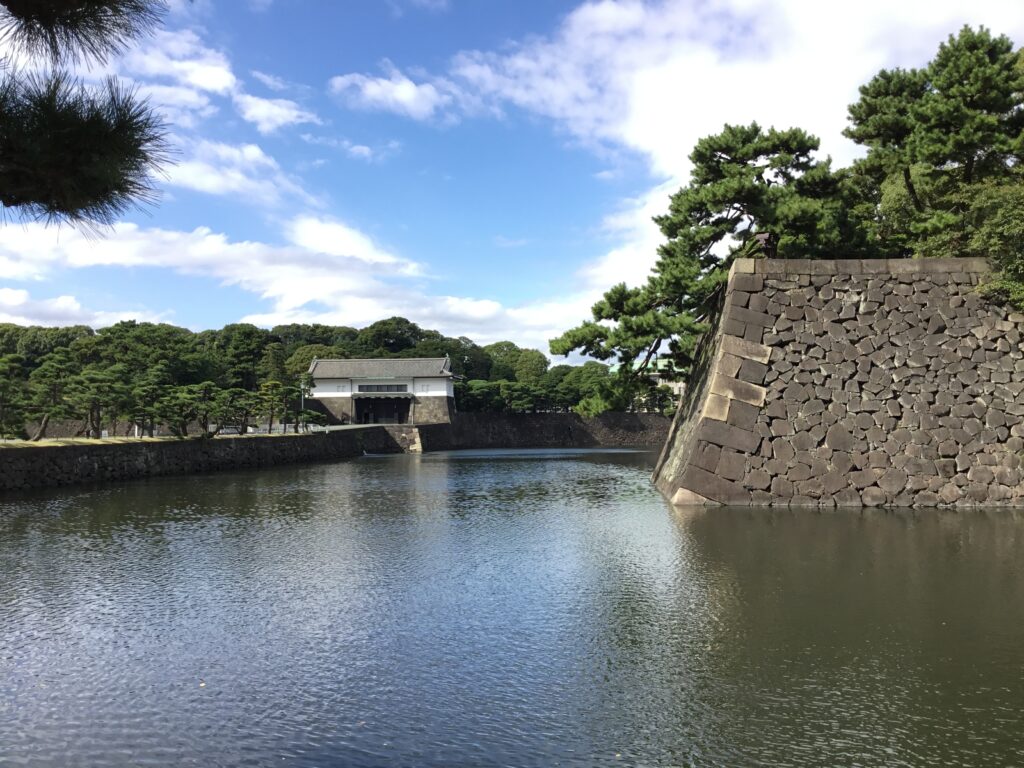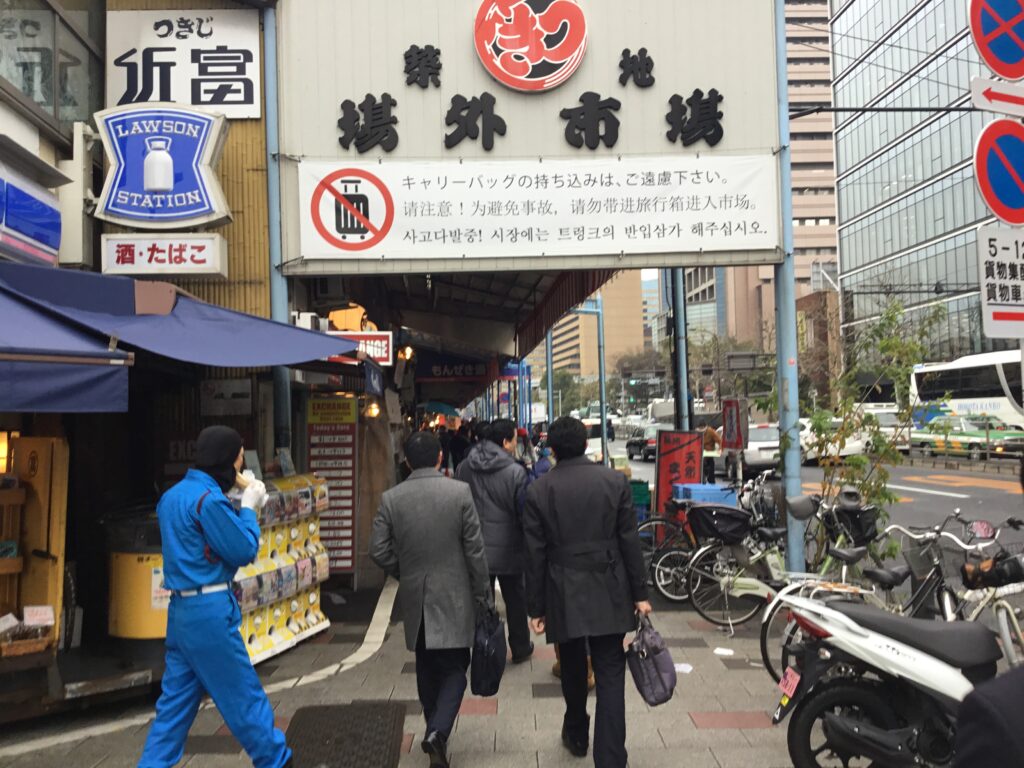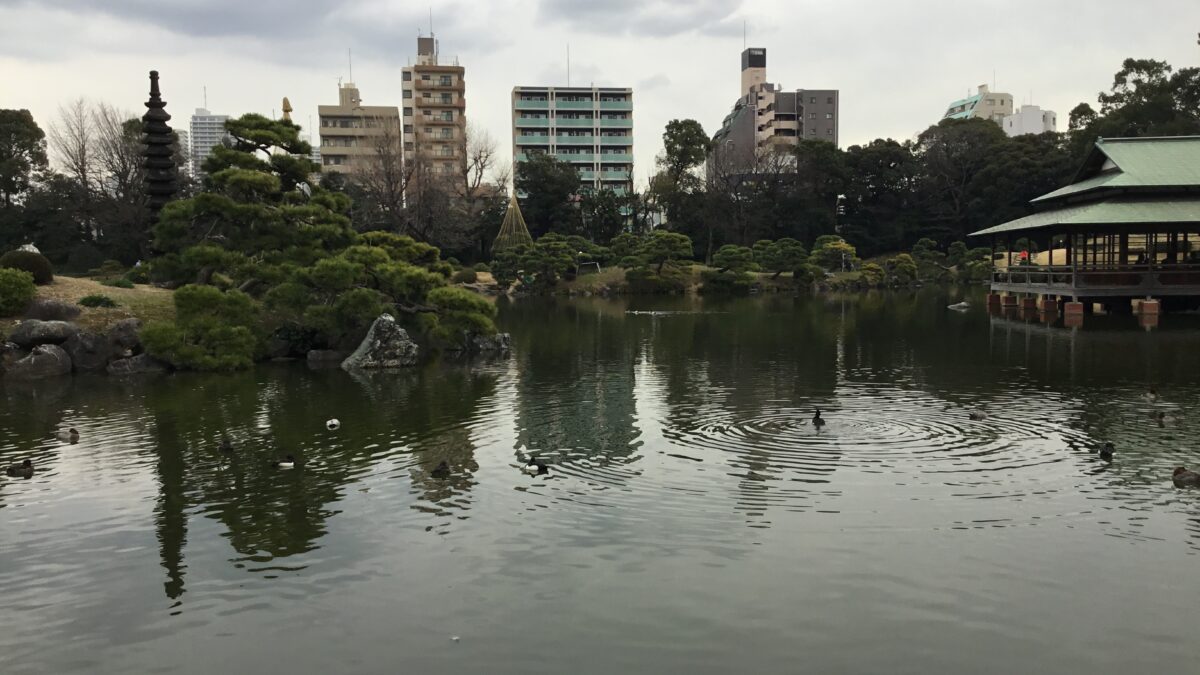(1) The place where you can experience:
(Imperial Palace):
Edo Castle, formerly the Tokugawa Family’s residence, became the Imperial Palace as the Emperor moved to Tokyo from the Kyoto Imperial Palace after the Meiji Restoration. The main residence of Emperors opens only twice a year such as beginning of each year and the birthday of each Emperor.
In the East Garden of the Imperial Palace, we see two main spots such as the main tower ruin of the former Edo castle and the Ninomaru Garden. Many kinds of seasonal flowers and plants are planted. You can enjoy the scenery all year around. It’s very a beautiful Japanese garden. Also, we visit Nijyubashi bridge (Front entrance of Imperial palace).
This palace is surrounded by moats and stone walls because this area used to be Edo castle.


Nijyubashi bridge (Front entrance of Imperial palace):
Nijyubashi bridge (Front entrance of Imperial palace) means “double bridge”. There is a stone bridge in front and an iron bridge behind. The silhouettes of the arches are reflected in the water of the moat that remind us as if it is a pair of glasses.

The main residence of Emperors opens only twice a year such as beginning of each year and the birthday of each Emperor. On the day, ordinary citizens are allowed to cross the Nijyubashi bridge to offer congratulations to the Imperial family who appear on the balcony of the Imperial palace.
The Reiwa Emperor is the 126th emperor.


Ootemon gate:
Ootemon faces East. Kyoto Imperial palace which used to be the residence of the Emperors before Meiji restoration for about 1100 years faces south. The south is the sunniest direction and only Kyoto Imperial palace was allowed to face.
Even Tokugawa shogunate in Edo era could not set the castle direction to be facing south.

Ootemon is constructed in the shape of a cubic container named “Masu”as Japanese word. We measure rice with the Masu. This Masu construction can prevent the enemies to intrude Edo castle because they will be trapped in a space shut off on all sides. Then, the soldiers to defend the castle will fire on the enemies from all directions.


Doshin Bansho Guardhouse:
Doshin Bansho Guardhouse has been remained from Tokugawa Shogunate. The Samurai named Doshin had lived here to surveillant people who enter the castle.

Hyakunin Bansho Guardhouse:
This is the largest of three guardhouses that have survived from Edo era. This is located between the San-no-maru and Naka-no-maru gates
This guardhouse had controlled the access to Honmaru main compound in Edo castle by setting more than 100 hundred Samurai guardians during day and night.


Obansho Guardhouse:
Obansho Guardhouse was a strategically important gate which is located near the back of Naka-no-Mon and the final checkpoint for people going into Honmaru compound.


Ishimuro / Stone cellar:
The purpose of this 20 square meter stone cellar is thought to have been a secret escape route for when the castle came under attack or to protect valuable articles and documents from fires frequently occurred.

Special Historic Site: Edo Castle Ruins:
Edo castle was constructed in 1457 and Tokugawa Ieyasu who established Edo shogunate had moved to live the castle in 1590.
Various extensions and maintenance of outer coat had been applied and the outermost enclosure of the castle had been finished in mid of 17 centry.
The main building of Edo castle had been burned down due to the big fire occurrence named “Meireki no Taika” in 1657. The Edo castle was rebuilt soon, however only castle tower was remained as burned down. The reason is that the lack of financial resources and the lack of need for a castle tower due to no more war possibility in Edo era.


Edo castle Honmaru Goten Palace:
Large lawn and surrounding area seen from this Tenshudai (Base of the main tower) were formerly lined with the buildings of Honmaru Goten Palace. It had consisted of three sections, namely Omote, Nalaoku and Ohoku. Omote was the stage for general public ceremonies including working place for various government officials of the Shogunate.
Nakaoku was the place where Shogun had lived as his everyday life and administered the affairs of state. Ohoku was the place where Shogun’s family, including his wife and other ladies/concubines, female staffs had lived.



Fujimi tower:
Fujimi tower is located in the south edge of Honmaru Goten Palace of Edo castle and the only triple turret which has survived up to now. The current tower was rebuilt in 1659 after being destroyed in the Great Fire of Meireki in 1657. This type of tower was built to preserve weapons and 19 numbers of tower was located in Edo era. Now, only three tower is remained. This Fujimi tower was used as the replacement castle tower after the castle tower was destroyed by fire. The height of the stone wall is 14.5m and that of the tower is 15.5m.


Shiomizaka slope:
This slope was built to connect Ninomaru (second compound)) and Honmaru (main compound).
In front down of this slope had used to be the place where Hibiya cove had entered in around beginning of 17th century. At present, Tokugawa shogunate had executed land reclamation on the area.


Ninomaru garden:
Ninomaru garden was the part of Ninomaru second compound of Edo castle. Various fires occurred during many years had damaged the garden. The current garden was created in 1964 which was modeled after a garden existed in mid-18 century. This is a stroll style garden connected to a pond.
One of the seven flowers of autumn: Japanese pampas grass / silver grass:

Mixed forest in Ninomaru garden:

Nimomaru garden:



2) The place where you can enjoy:
(Tsukiji outer market):
Tsukiji Fish Market used to consist of two main areas as the inner market and the outer market. Tokyo government already relocated the inner market of Tsukiji to Toyosu new market on Oct,2018. Tsukiji outer market sells various kinds of food fish related, cooking tools, restaurants and so-on. You can walk around the outer markets to see those.


At present, more than 400 specialty shops including not only groceries but also Knives, packaging materials, tableware and so-on are lined up in the market. Also, there are massive restaurants there that makes this market area as the comprehensive food market that is unique in the world.






| support@japan-van.com | |
| 1 | |
| 2 |
